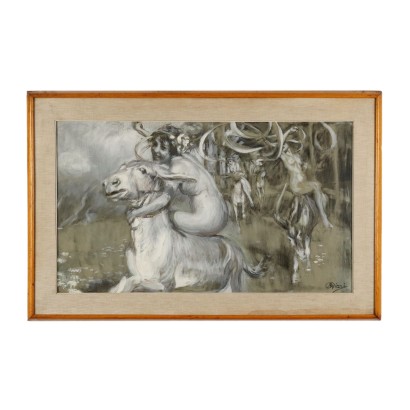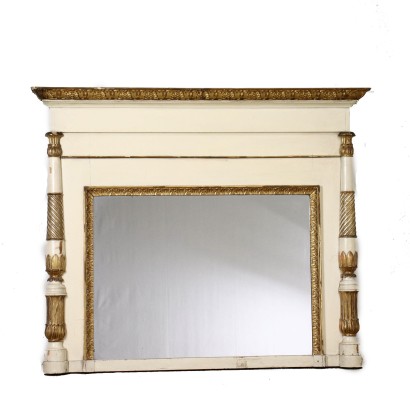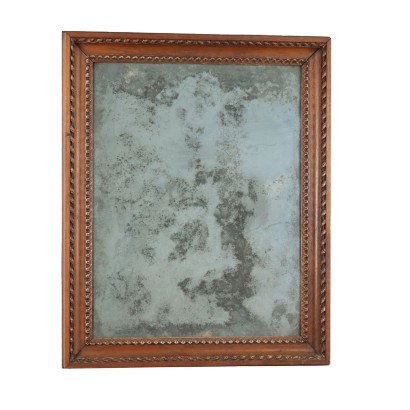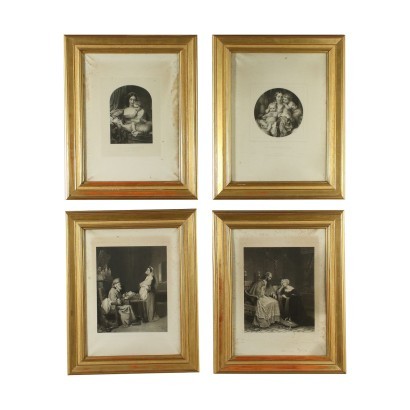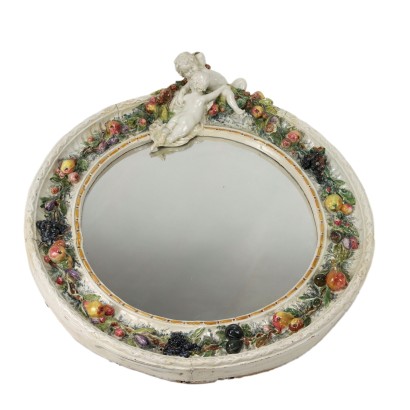Ancient Painting A. Rizzi Mythological Subject Oil on Cardboard '800 - Wood Nymphs
Features
Artist: Antonio Rizzi (1869-1940)
Artwork title: Ninfe dei Boschi
Age: 19th Century / 1801 - 1900
Subject: Allegorical/Mythological Subject
Artistic technique: Painting
Technical specification: Oil on Cardboard
Description : Ninfe dei Boschi
Oil on cardboard. Signed lower right. The Cremonese artist Antonio Rizzi includes in his production several works that have the mythological nymphs as their subject. In particular we remember the "Nereids under the moon", a work dated 1906 and preserved in the Ala Ponzone Civic Museum in Cremona. The work proposed here instead depicts the Nymphs of the woods, girls riding naked on the backs of donkeys, coming out of the woods in a festive and playful procession. The work is influenced by the Liberty style, which Rizzi knew above all in his Roman period. The work is presented in a frame.
Product Condition:
Product in good condition, shows small signs of wear. We try to present the real state as fully as possible with photos. If some details are not clear from the photos, what is reported in the description will prevail.
Frame Size (cm):
Height: 71
Width: 110
Depth: 3
Artwork dimensions (cm):
Height: 56
Width: 94
Additional Information
Artist: Antonio Rizzi (1869-1940)
Born in Cremona in 1869, Antonio Rizzi was active throughout his life in his native city, creating the curtain of the Ponchielli Theater (1891), the decorations of the Palazzo Comunale (1928-29), the paintings of the Civic Museum. He also worked in Vienna, Berlin, Barcelona, Caracas. Rizzi arrived in Rome in his early thirties, around 1913, participating in the liberty climate of the Roman Biennials. Here he was commissioned the four large mosaic lunettes of the propylaea of the Monument to Vittorio Emanuele II, the Altare della Patria just built by the Piedmontese Giuseppe Sacconi with the famous Botticino marble. The executive sketches of the four lunettes, simplified and symbolic, representing Peace, Law, Union and Value, are kept in the Civic Museum of Cremona. Rizzi died in Florence in 1940.n
Age: 19th Century / 1801 - 1900
19th Century / 1801 - 1900
Subject: Allegorical/Mythological Subject
Artistic technique: Painting
La pittura è l'arte che consiste nell'applicare dei pigmenti a un supporto come la carta, la tela, la seta, la ceramica, il legno, il vetro o un muro. Essendo i pigmenti essenzialmente solidi, è necessario utilizzare un legante, che li porti a uno stadio liquido, più fluido o più denso, e un collante, che permetta l'adesione duratura al supporto. Chi dipinge è detto pittore o pittrice. Il risultato è un'immagine che, a seconda delle intenzioni dell'autore, esprime la sua percezione del mondo o una libera associazione di forme o un qualsiasi altro significato, a seconda della sua creatività, del suo gusto estetico e di quello della società di cui fa parte.
Technical specification: Oil on Cardboard
Other customers have searched:



